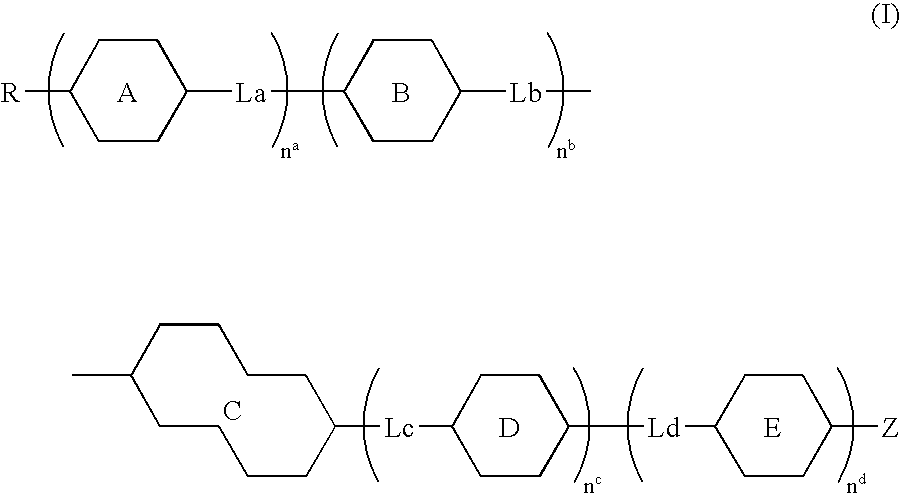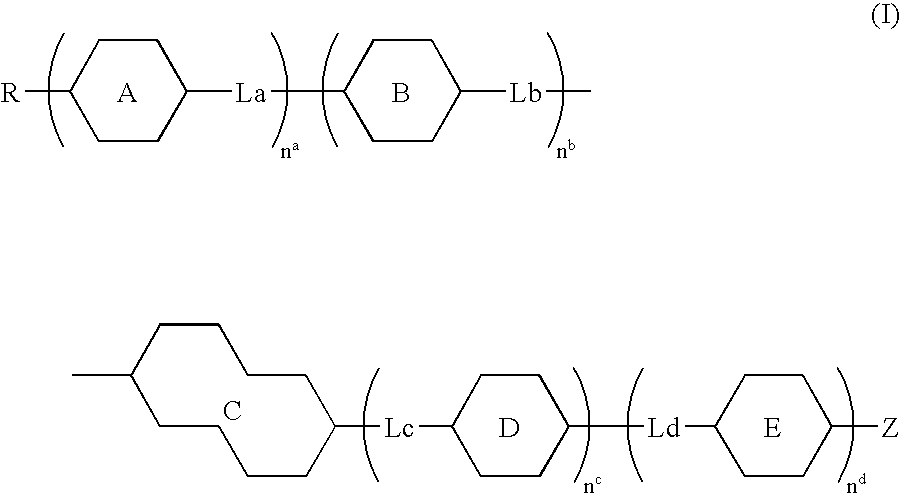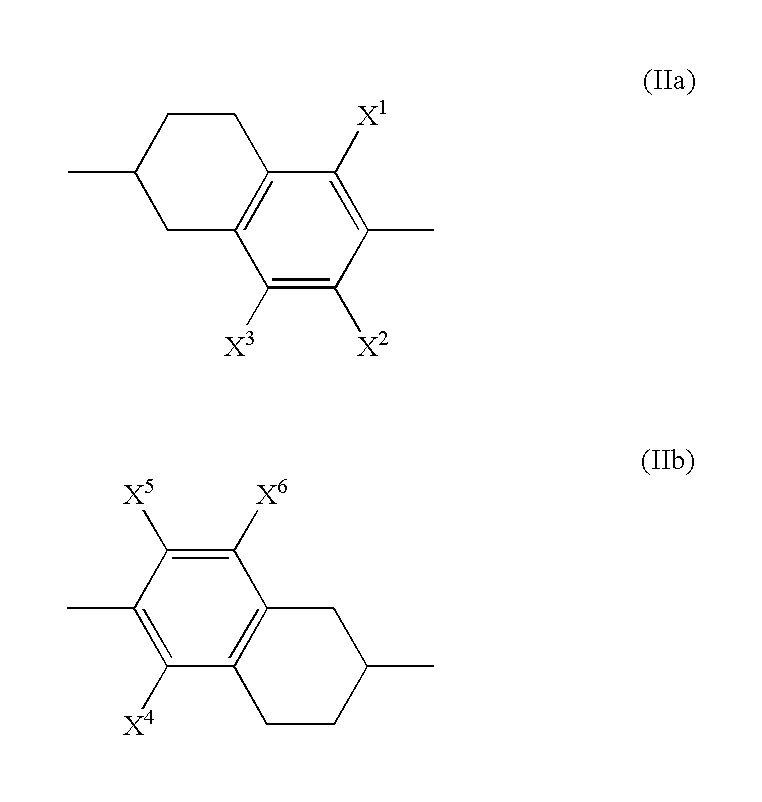Compound having tetrahydronaphthalene skeleton and liquid crystal composition containing same
a technology of tetrahydronaphthalene and skeleton, which is applied in the field of compounds having tetrahydronaphthalene skeleton and liquid crystal composition containing same, can solve the problems of inability to accurately estimate the properties of this type of compound, inability to produce compound with ease, and inability to adequately accommodate the aforementioned demands. , to achieve the effect of reducing the response speed and improving the response speed
- Summary
- Abstract
- Description
- Claims
- Application Information
AI Technical Summary
Benefits of technology
Problems solved by technology
Method used
Image
Examples
example 1
Synthesis of 2-(4-propylphenyl)-6-fluoro-1,2,3,4-tetrahydronaphthalene (I-1-1)
##STR49##
(1-1) Synthesis of 6-fluoro-3,4-dihydro-2(1H)-naphthalenone
To a solution of 30 g of 4-fluorophenylacetic acid and 48.9 g of thionyl chloride in 60 ml of 1,2-dichloroethane was added a catalytic quantity of pyridine, and the solution was then refluxed for 5 hours under an atmosphere of nitrogen. Following removal of the 1,2-dichloroethane, the product was added dropwise to an ice cooled suspension of 48.6 g of aluminum chloride in 200 ml of dichloromethane. Following stirring for 30 minutes, ethylene gas was blown into the reaction vessel, and after a further 5 hours of stirring, dilute hydrochloric acid was added, and following separation of the organic layer, the aqueous layer was extracted with toluene. The toluene extract was combined with the organic layer and washed subsequently with water, a saturated aqueous solution of sodium bicarbonate, water, and a saturated aqueous solution of sodium c...
example 2
Synthesis of 2-(4-propylphenyl)-5,6,7-trifluoro-1,2,3,4-tetrahydronaphthalene (I-1-2)
Under the same conditions as those described for the example 1, using 3,4,5-trifluorophenylacetic acid instead of 4-fluorophenylacetic acid yielded 2-(4-propylphenyl)-5,6,7-trifluoro-1,2,3,4-tetrahydronaphthalene.
example 3
Synthesis of 2-(4-propylphenyl)-5,7-difluoro-6-cyano-1,2,3,4-tetrahydronaphthalene
##STR50##
Under the same conditions as those described for the example 1, using 3,5-difluorophenylacetic acid instead of 4-fluorophenylacetic acid yielded 2-(4-propylphenyl)-5,7-difluoro-1,2,3,4-tetrahydronaphthalene. 10 g of this 2-(4-propylphenyl)-5,7-difluoro-1,2,3,4-tetrahydronaphthalene was lithiated using butyllithium, converted to a benzoic acid by blowing carbon dioxide into the reaction vessel, subsequently converted to an acid chloride with thionyl chloride, and an amide then synthesized by blowing ammonia gas into the reaction mixture was dissolved in 40 ml of DMF, 2.5 ml of phosphorus oxychloride was added, and the reaction was allowed to proceed for 2 hours at 25.degree. C. The reaction liquid was poured into water with ice, dilute hydrochloric acid was added, and the water layer was extracted with toluene. The toluene extract was combined with the organic layer, and following washing with ...
PUM
| Property | Measurement | Unit |
|---|---|---|
| temperature | aaaaa | aaaaa |
| temperature | aaaaa | aaaaa |
| temperature | aaaaa | aaaaa |
Abstract
Description
Claims
Application Information
 Login to View More
Login to View More - R&D
- Intellectual Property
- Life Sciences
- Materials
- Tech Scout
- Unparalleled Data Quality
- Higher Quality Content
- 60% Fewer Hallucinations
Browse by: Latest US Patents, China's latest patents, Technical Efficacy Thesaurus, Application Domain, Technology Topic, Popular Technical Reports.
© 2025 PatSnap. All rights reserved.Legal|Privacy policy|Modern Slavery Act Transparency Statement|Sitemap|About US| Contact US: help@patsnap.com



